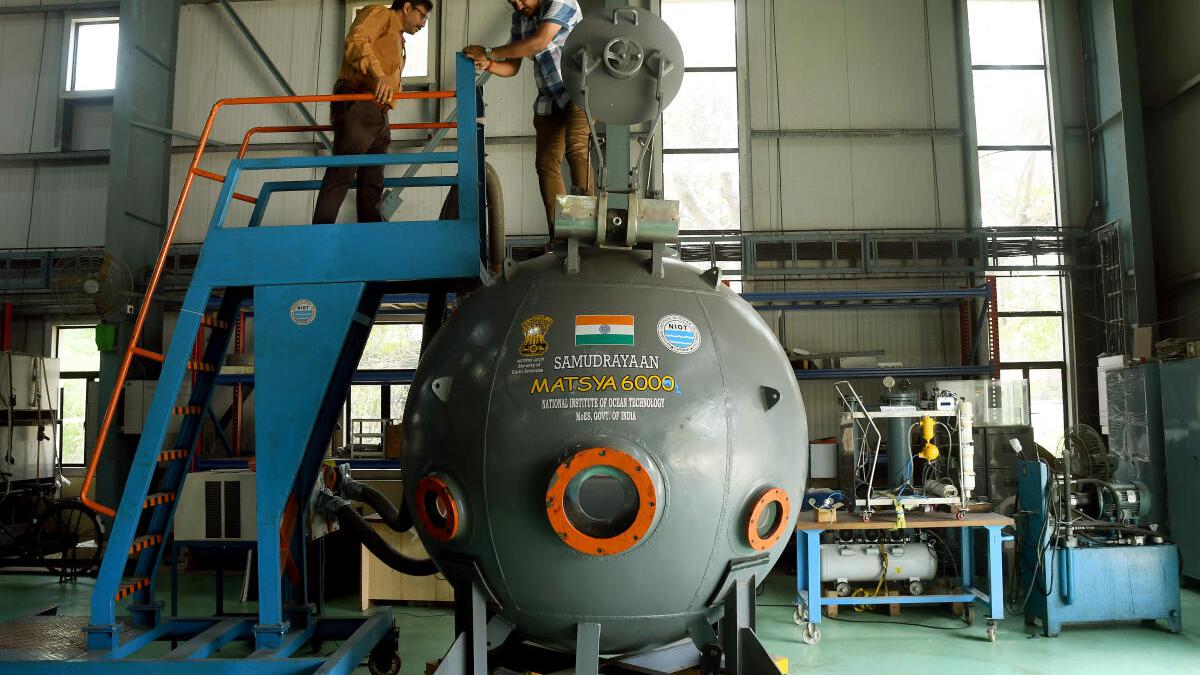
Inside India’s ‘Deep Ocean Mission’, a challenge harder than going to space
The Hindu
India's Deep Ocean Mission (DOM) is an ambitious programme to explore and harness the depths of the ocean. DOM, approved by the Union Cabinet in 2021, has six pillars, including the development of technologies for deep-sea mining and a manned submersible to reach a depth of 6,000 metres. NIOT has designed Matsya6000, a deep-ocean submersible, and Varaha, an underwater mining system, to achieve the mission's objectives. Matsya6000 and Varaha have successfully completed tests and trials, and India is set to join the ranks of countries with successful deep-ocean crewed missions. DOM is a priority area for India, and MoES institutes are collaborating with other national institutes and academia to achieve its goals.
The Deep Ocean Mission (DOM) is India’s ambitious quest to explore and harness the depths of the ocean. As part of this initiative, India will, for the first time, embark on a journey to a depth of 6,000 metres in the ocean using an indigenously developed submersible with a three-member crew. The mission will require technologies to access and transport tonnes of valuable minerals from the ocean-bed in an environmentally safe manner. The following interview, with M. Ravichandran, Secretary of the Ministry of Earth Sciences, breaks down the mission and its salient features and challenges. It was conducted by Bhavya Khanna, a scientist in the Ministry.
Please tell us about the DOM and how MoES contributes to this programme.
DOM is India’s ambitious programme, chiefly implemented by the MoES. DOM was approved by the Union Cabinet in 2021 at a cost of nearly Rs 4,077 crore over a five-year period in a phased manner. The mission has six pillars:
(i) Development of technologies for deep-sea mining and a manned submersible to carry three people to a depth of 6,000 metres in the ocean. The submersible will be equipped with a suite of scientific sensors, tools and an integrated system for mining polymetallic nodules from the central Indian Ocean;
(ii) Development of ocean climate change advisory services, involving an array of ocean observations and models to understand and provide future climate projections;
(iii) Technological innovations for the exploration and conservation of deep-sea biodiversity;
(iv) Deep-ocean survey and exploration aimed at identifying potential sites of multi-metal hydrothermal sulphides mineralisation along the Indian Ocean mid-oceanic ridges;





















 Run 3 Space | Play Space Running Game
Run 3 Space | Play Space Running Game Traffic Jam 3D | Online Racing Game
Traffic Jam 3D | Online Racing Game Duck Hunt | Play Old Classic Game
Duck Hunt | Play Old Classic Game











